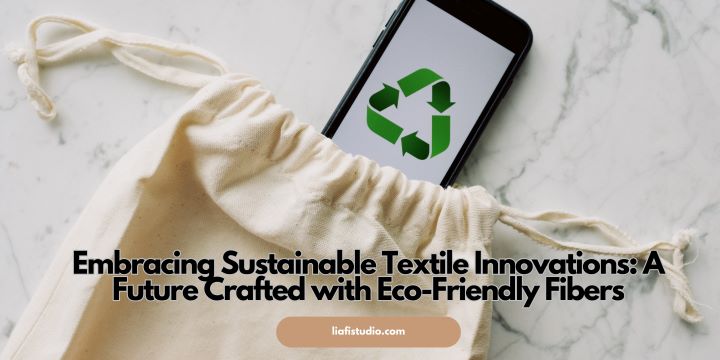Key Takeaways:
- Eco-friendly fabrics reduce the textile industry’s environmental impact through innovative and sustainable practices.
- Consumer awareness and purchasing power are critical in pushing the industry towards sustainability.
- Adopting sustainable textiles can pose challenges, but the long-term benefits far outweigh the initial obstacles.
Table of Contents:
- Understanding the Impact of Textiles on the Environment
- The Rise of Sustainable Fibers: A Revolution in Textile Manufacturing
- Key Features of Eco-Friendly Textile Solutions
- The Benefits of Sustainable Fibers for the Future of Fashion
- Challenges in Transitioning to Sustainable Textile Production
- Highlighting Innovators in the Field of Sustainable Textiles
- Consumer Influence: The Power of Responsible Purchasing
- The Role of Policy in Promoting Sustainable Textile Practices
- Education and Awareness: Spreading the Word About Sustainable Textiles
- Looking Ahead: Innovations and Trends in Sustainable Textiles
Understanding the Impact of Textiles on the Environment
The fabric of our society, quite literally, hangs on the threads of textile production—a sector that historically has placed a significant strain on the planet’s resources. Intensive cultivation of raw materials, use of toxic dyes, and energy-heavy manufacturing processes have raised serious concerns among environmentalists and consumers alike. These practices lead to the depletion of non-renewable resources, contamination of water bodies, and accumulation of textile waste in landfills. As a result, there is growing recognition that moving toward eco-friendly fabric suppliers is one of the most critical steps in reducing these environmental effects. These suppliers are addressing the industry’s carbon footprint by integrating sustainable and renewable practices that are kinder to the Earth.
The Rise of Sustainable Fibers: A Revolution in Textile Manufacturing
The fashion world is now witnessing a tectonic shift with the emergence of sustainable fibers that promise an eco-friendly future without compromising quality or style. As eco-friendly fibers take center stage, we see a paradigm shift from traditional materials to those offering a lower environmental footprint. Innovations such as Tencel, made from renewable eucalyptus trees and recycled fabrics that give a second life to pre-existing materials, are revolutionizing textile manufacturing. These sustainable fibers meet consumer demand for environmentally responsible products and testify to the industry’s capability for monumental change.
Key Features of Eco-Friendly Textile Solutions
A textile solution must adhere to specific environmental criteria to be classified as eco-friendly. These include the responsible sourcing raw materials, utilizing renewable energy during production, and ensuring that the final product is biodegradable or recyclable. Water conservation is another critical element, with these innovative solutions often involving less water-intensive processes than traditional cotton or synthetic materials. Furthermore, eco-friendly textiles are frequently produced without the need for harmful pesticides or toxic chemicals, diminishing their adverse impact on workers’ health and ecosystems, thereby fostering a sustainable, ethical, and socially responsible industry.
The Benefits of Sustainable Fibers for the Future of Fashion
Embracing sustainable fibers within the fashion industry holds many benefits that transcend the aesthetic appeal of clothing. These benefits extend to various facets of the industry—it’s a domino effect where eco-friendly practices can lead to improved biodiversity, soil health, and reduced pollution. In addition, embracing the future of sustainable fabrics can enhance a brand’s image, nurturing customer loyalty among an increasingly eco-conscious consumer base. The economic advantages also come into play, with sustainable fibers typically having lower long-term costs due to reduced energy and water usage. However, perhaps the most profound benefit is the intangible responsibility towards our planet and future generations, ensuring that the fashion we enjoy today doesn’t come at the expense of tomorrow’s world.
Challenges in Transitioning to Sustainable Textile Production
Moving away from established practices toward a more sustainable approach is not without its tests and trials. High initial costs for research and development of sustainable textiles can deter companies from making the necessary changes. Other significant challenges include:
- Sourcing quality eco-friendly materials in bulk.
- Upgrading machinery to work with these new materials.
- Overcoming the inertia of traditional supply chains.
Furthermore, there is often a knowledge gap within the industry—many manufacturers and designers are still catching up with the technical know-how required for working with these newer, sustainable materials. Nonetheless, as more companies recognize the importance of embracing these challenges, they find innovative ways to make the transition seamless and cost-effective.
Highlighting Innovators in the Field of Sustainable Textiles
The silver lining in the industry’s sustainability push is the number of innovators leading the way, showcasing how sustainable practices can be implemented successfully. These trailblazers not only incorporate eco-friendly materials into their products but are also rethinking the entire lifecycle of these textiles. These industry leaders understand their critical role in driving the sustainable revolution, from start-ups to established brands. They are eager to share their insights and discoveries on this path to a more resilient and responsible industry. Their efforts represent a beacon of progress and set the stage for others to follow their lead.
Consumer Influence: The Power of Responsible Purchasing
Consumer choices have never been more potent than they sustainably are today. Thanks to the growth of social media and online platforms, people are now more informed and aware of the effects of their purchases. An informed customer base pushes the textile industry to prioritize eco-friendliness and transparency in production processes. Furthermore, consumers actively seeking sustainable options send a clear message to retailers and brands—a market for conscientious fashion is here to stay. Armed with knowledge and the power of choice, consumers are reshaping the landscape of the fashion industry, one sustainable purchase at a time.
The Role of Policy in Promoting Sustainable Textile Practices
While the private sector’s efforts are critical in shifting towards more sustainable practices, there is an equally important role for public policy to play. Governments can encourage the uptake of eco-friendly textiles through positive reinforcement strategies—such as subsidies for sustainable practices, grants for innovation, and penalizing pollutive practices. On the international stage, trade policies can be leveraged to foster an environment where sustainability is a precondition for market access. This combination of policy support and commercial interest could significantly accelerate the transition to a greener, more sustainable textile industry.
Education and Awareness: Spreading the Word About Sustainable Textiles
The key to stimulating and sustaining the growth of eco-friendly textile practices lies in education and raising public awareness. Public awareness campaigns about the value of sustainability in fashion significantly impact consumer behavior. Moreover, providing education opportunities for industry professionals ensures they have the skills to adopt and promote sustainable practices. This dual consumer and industry education approach is fundamental to creating a culture that values and supports sustainability.
Looking Ahead: Innovations and Trends in Sustainable Textiles
The future of sustainable textiles is bright and brimming with potential. Innovations like lab-grown leather, algae-based fabrics, and 3D printing of garments are on the horizon, offering the promise of reduced waste and incredible efficiency. As new materials and practices enter the market, they also bring challenges—how to scale up production sustainably, ensure accessibility, and maintain affordability. The trends suggest that as technology evolves, so too will our ability to produce textiles that are not only stylish and functional but also sustainably made.
Ultimately, the textile industry’s journey toward sustainability is a collective effort involving innovators, consumers, and policymakers. By embracing eco-friendly fibers and recognizing the power of responsible purchasing and continued education, we can look forward to a future where fashion and sustainability go hand in hand—where environmentally responsible textiles are the norm, not the exception. It’s time to weave sustainability into the fabric of our fashion choices for the good of the planet and future generations.








